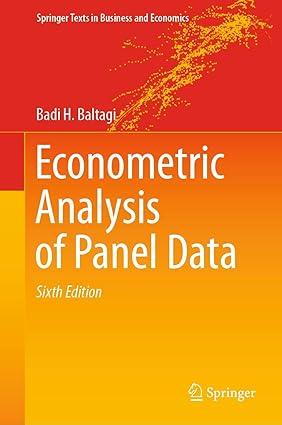This is based on problem 95.5.4 in Econometric Theory by Baltagi (1995). Davidson and MacKinnon (1993) derive
Question:
This is based on problem 95.5.4 in Econometric Theory by Baltagi (1995). Davidson and MacKinnon (1993) derive an artificial regression for testing hypotheses in a binary response model. For the fixed effects model described in (11.4), the reader is asked to derive the BRMR to test \(H_{o} ; \mu_{i}=0\), for \(i=1,2, \ldots, N\). Show that if \(F(\).) is the Logistic (or Normal) cumulative distribution function, this BRMR is simply a weighted least squares regression of logit (or probit) residuals, ignoring the fixed effects, on the matrix of regressors \(\mathrm{X}\) and the matrix of individual dummies. The test statistic in this case is the explained sum of squares from this BRMR. See solution 95.5.4 in Econometric Theory by Gurmu (1996).
\[\begin{equation*}
\operatorname{Pr}\left[y_{i t}=1\right]=\operatorname{Pr}\left[y_{i t}^{*}>0\right]=\operatorname{Pr}\left[v_{i t}>-x_{i t}^{\prime} \beta-\mu_{i}\right]=F\left(x_{i t}^{\prime} \beta+\mu_{i}\right) \tag{11.4}
\end{equation*}\]
Step by Step Answer:






